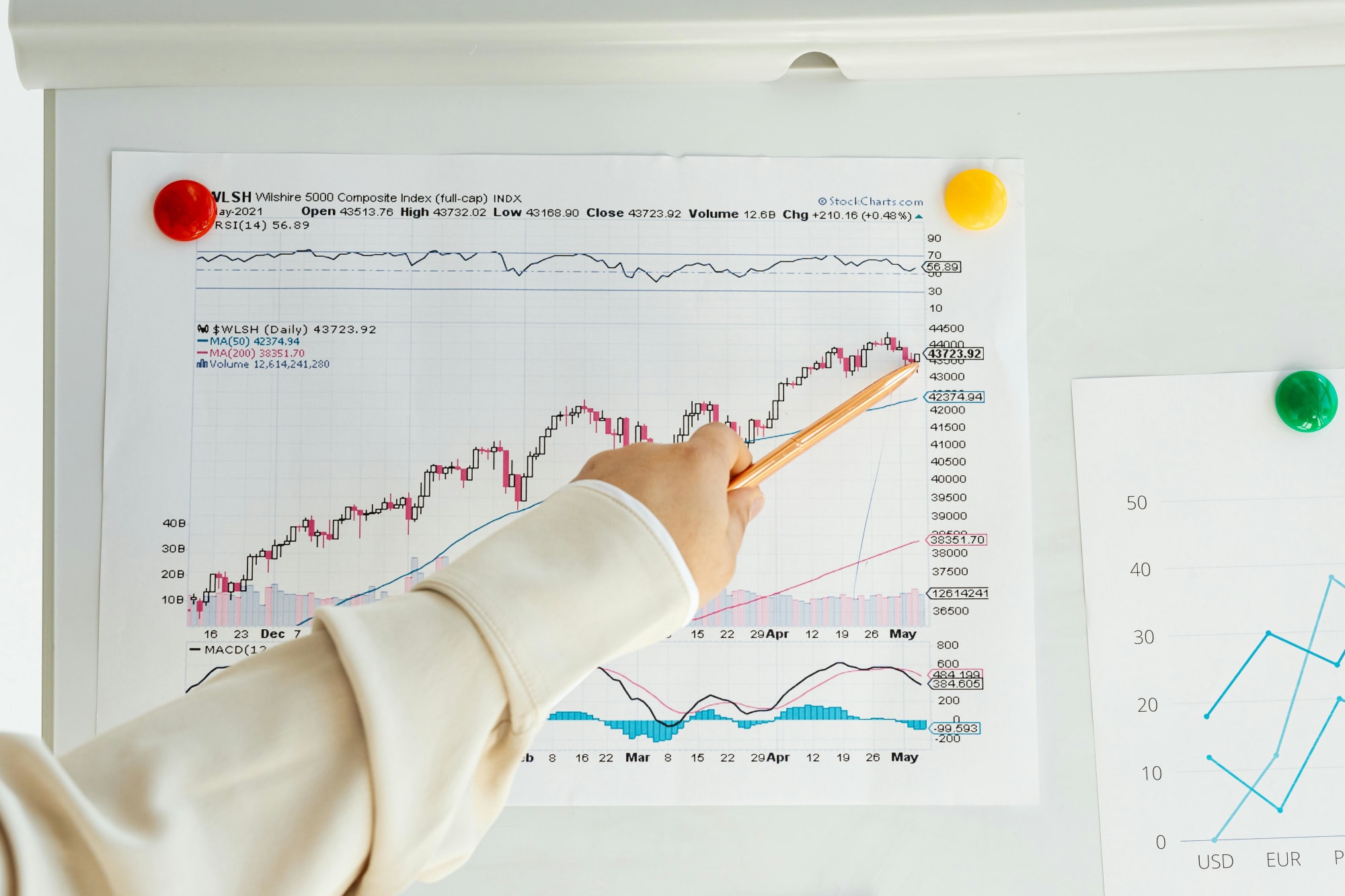Invest
Understanding the economic indicators that affect your earnings
The landscape of personal finance is profoundly influenced by broader economic trends and indicators.
Understanding the economic indicators that affect your earnings
The landscape of personal finance is profoundly influenced by broader economic trends and indicators.

For Australians, understanding these indicators is crucial for making informed decisions about investments, savings, and employment. This article delves into several key economic indicators and elucidates their impact on individual earnings.
Decoding economic indicators impacting your earnings
Gross domestic product (GDP)
GDP measures the total value of goods and services produced within a country. It’s a primary indicator of economic health.
A rising GDP typically signals a growing economy, leading to higher wages and more job opportunities. Conversely, a declining GDP suggests economic contraction, potentially leading to layoffs or reduced earnings.
Unemployment rate
The unemployment rate, the percentage of the jobless labour force, directly affects earnings. High unemployment often leads to lower wage growth as employers have more potential employees to choose from. Conversely, low unemployment can drive wages up, as businesses compete for a smaller pool of workers.

Inflation and the Consumer Price Index (CPI)
Inflation measures how much the general level of prices for goods and services is rising. The Consumer Price Index (CPI) is a key measure of inflation, tracking the cost of a standard basket of goods and services over time.
High inflation erodes the purchasing power of earnings, meaning that even if your wage increases, your buying power may not.
Interest rates
Set by the Reserve Bank of Australia (RBA), interest rates influence borrowing costs and savings returns.
Higher rates can reduce disposable income for those with variable-rate debts, like mortgages, but can benefit savers through higher returns on deposits. Lower interest rates generally aim to stimulate spending and investment but can reduce the income from savings.
Housing market trends
For many Australians, their home is their largest asset. Trends in the housing market can significantly affect net worth and financial security.
Rising house prices can increase homeowner equity, potentially leading to increased spending or investment capacity. However, a declining market can have the opposite effect, reducing net worth and financial confidence.
Stock market performance
While not directly affecting everyone’s daily earnings, the stock market’s performance can influence consumer and business confidence, which can impact the broader economy. A strong stock market can boost retirement account values and create wealth, encouraging spending and investment.
Exchange rates
The strength of the Australian dollar impacts the cost of imported goods and overseas travel. A strong dollar makes imports cheaper, potentially reducing costs for consumers and businesses. However, it can also make Australian exports more expensive, impacting sectors like tourism and export-oriented industries.
Government fiscal policy
Government spending and tax policies can directly affect disposable income. Policies aimed at stimulating economic growth, such as tax cuts or increased public spending, can increase disposable income and boost consumer spending.
Global economic trends
In today’s interconnected world, global economic trends can have a significant impact on the Australian economy. Events like trade wars, global pandemics, or financial crises in other countries can affect Australia’s export markets, investment flows, and overall economic stability.
—
Understanding these economic indicators is essential for making informed decisions about your finances. They provide a context for interpreting changes in the job market, the value of investments, and the cost of living.
By staying informed and adapting to these economic signals, individuals can better navigate the financial landscape and protect their earnings.

Economy
Navigating the inflation maze: How CFOs can outsmart economic hurdles in Australia
Fresh inflation data have cooled expectations of near-term rate cuts in Australia, intensifying pressure on margins, capital allocation and demand. Rather than wait for monetary relief that may not ...Read more

Economy
Inflation concerns rise as Australia's CPI climbs to 3.8% in October
Australia's latest Consumer Price Index (CPI) figures have sent ripples through the economy, with headline inflation accelerating to 3.8% year-on-year in October, up from 3.6% in September. The data, ...Read more

Economy
October CPI results pose challenges for RBA’s monetary policy stance
In a surprising turn of events, the October Consumer Price Index (CPI) data has raised eyebrows among economists and market strategists, revealing stronger-than-expected inflationary pressures in ...Read more

Economy
Global deal activity declines by 6% amid economic uncertainty, reports GlobalData
In a year characterised by economic turbulence and evolving market conditions, global deal activity has witnessed a notable downturn during the first ten months of 2025. According to GlobalData, a ...Read more

Economy
Australia’s softening labour market puts another RBA cut in play — here’s what business should do now
A four-year high in unemployment has revived expectations the Reserve Bank could deliver another rate cut as soon as November. With quarterly GDP growth running at 0.6 per cent and annual growth at ...Read more

Economy
Rising CPI reinforces RBA’s stance as rate cut expectations remain: State Street
State Street Global Advisors says the Reserve Bank of Australia (RBA) is likely to hold its current policy outlook following the release of September quarter inflation data, which showed an unexpected ...Read more

Economy
NSW SES boosts tsunami preparedness ahead of World Tsunami Awareness Day
As World Tsunami Awareness Day approaches on 5 November, the New South Wales State Emergency Service (NSW SES) is ramping up efforts to enhance tsunami preparedness along the east coastRead more

Economy
Lifesaving Regional Response Strengthened with New NSW SES Vehicles
In a significant boost to regional emergency services, the NSW State Emergency Service (SES) has unveiled 11 new Community First Response (CFR) vehicles, designed to enhance the speed and safety of ...Read more

Economy
Navigating the inflation maze: How CFOs can outsmart economic hurdles in Australia
Fresh inflation data have cooled expectations of near-term rate cuts in Australia, intensifying pressure on margins, capital allocation and demand. Rather than wait for monetary relief that may not ...Read more

Economy
Inflation concerns rise as Australia's CPI climbs to 3.8% in October
Australia's latest Consumer Price Index (CPI) figures have sent ripples through the economy, with headline inflation accelerating to 3.8% year-on-year in October, up from 3.6% in September. The data, ...Read more

Economy
October CPI results pose challenges for RBA’s monetary policy stance
In a surprising turn of events, the October Consumer Price Index (CPI) data has raised eyebrows among economists and market strategists, revealing stronger-than-expected inflationary pressures in ...Read more

Economy
Global deal activity declines by 6% amid economic uncertainty, reports GlobalData
In a year characterised by economic turbulence and evolving market conditions, global deal activity has witnessed a notable downturn during the first ten months of 2025. According to GlobalData, a ...Read more

Economy
Australia’s softening labour market puts another RBA cut in play — here’s what business should do now
A four-year high in unemployment has revived expectations the Reserve Bank could deliver another rate cut as soon as November. With quarterly GDP growth running at 0.6 per cent and annual growth at ...Read more

Economy
Rising CPI reinforces RBA’s stance as rate cut expectations remain: State Street
State Street Global Advisors says the Reserve Bank of Australia (RBA) is likely to hold its current policy outlook following the release of September quarter inflation data, which showed an unexpected ...Read more

Economy
NSW SES boosts tsunami preparedness ahead of World Tsunami Awareness Day
As World Tsunami Awareness Day approaches on 5 November, the New South Wales State Emergency Service (NSW SES) is ramping up efforts to enhance tsunami preparedness along the east coastRead more

Economy
Lifesaving Regional Response Strengthened with New NSW SES Vehicles
In a significant boost to regional emergency services, the NSW State Emergency Service (SES) has unveiled 11 new Community First Response (CFR) vehicles, designed to enhance the speed and safety of ...Read more








